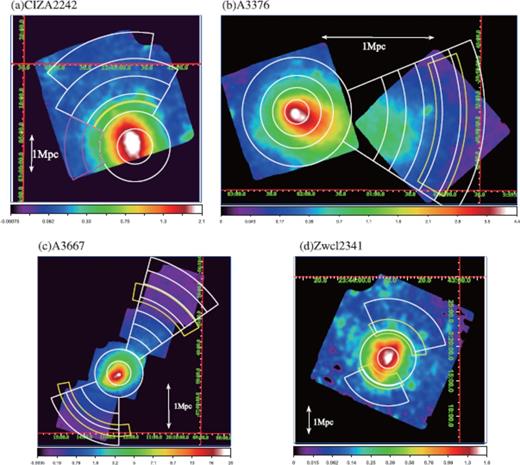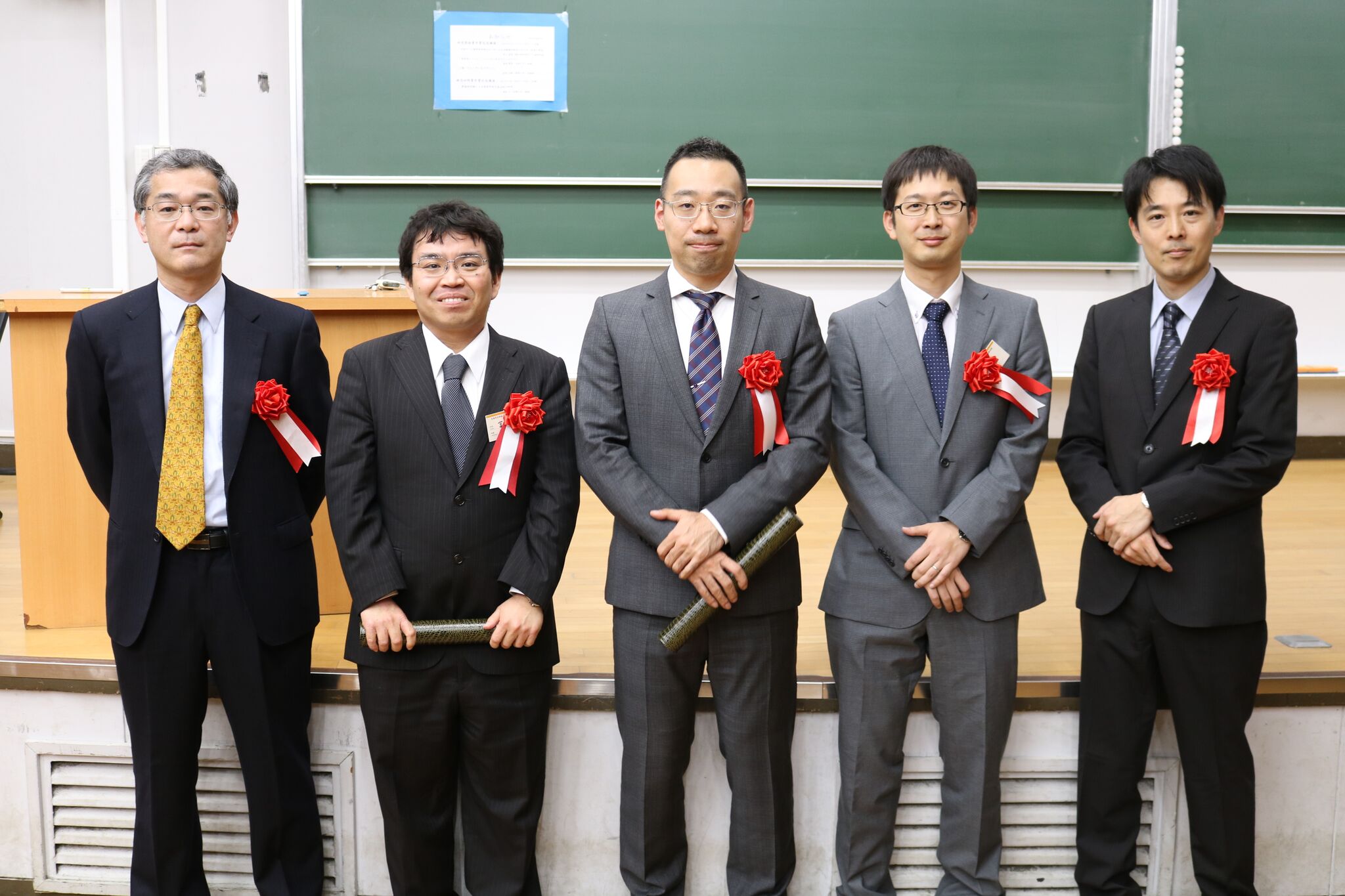Astronomers who are studying galaxy clusters are revealing more and more about how things work in the biggest structures in the universe. Thanks to newer telescopes that are being developed, they might soon be able to pinpoint more precisely how weak shock-structures in the tenuous hot gas in galaxy clusters and the acceleration of particles are induced. An important paper that has already provided important proof and put cluster astronomers onto new ideas, has now been awarded the Astronomical Society of Japan PASJ Excellent Paper Award.

In 2013 Hiroki Akamatsu (SRON Netherlands Institute for Space Research) and Hajime Kawahara (University of Tokyo) published in ‘Publications of the Astronomical Society of Japan’ (PASJ) how they finally found proof that shock-structures were indeed found on locations where astronomers expected them to be found: on spots where radio relics were observed earlier.
Radio relics are elongated diffuse radio emissions located at outskirts of galaxy clusters. They are believed to be formed via shock accelerations that are induced when clusters merge. The presence of such shock structures wasn’t verified however, until a systematic X-ray study of radio relic clusters was done for the first time.
Evidence
“Since X-ray emission at cluster outskirts are very faint, previous studies could not provide solid evidence of the presence of shock structure at these radio relic locations. The Japanese X-ray satellite Suzaku however, provided observations to solve this problem.”
Thanks to the low and stable background of Suzaku and the careful analysis of data, Akamatsu and Kawahara managed to confirm several significant temperature and surface brightness drops across relics. Their findings establish the presence of shock structures and the previously long-thought relationship between shock structure and radio relics with actual observations.
The paper poses new questions on the mechanism of particle acceleration in relation to weak shockwave structures, like ‘What causes inconsistency of shock properties from X-ray and radio observations, and how can weak shocks cause such amount of acceleration?’
Based on the advances in cluster physics and the successful Dutch low-frequency radio telescope LOFAR, Hiroki Akamatsu has worked together with collaborators at SRON and Leiden to better understand particle acceleration mechanics in galaxy clusters.

Breakthroughs
The collaboration is generating several breakthroughs in the field. New observations with newer and more sensitive X-ray telescopes like Athena and XARM that are being developed, might provide more answers soon.
With the now awarded paper as a trigger, more X-ray-, radio-, theoretical and simulation studies are done to find answers to the new questions. Because weak shocks are also occurring within the Solar system and in interstellar space, the outcome of Akamatsu and Kawahare’s research also has an impact on other astronomical fields.
The mechanism of particle acceleration with weak shocks as observed with Suzaku is an important long-standing problem in astronomy and is poorly understood yet.
Happy
Akamtsu is very happy with his award. “The power and capability of Suzaku were evaluated well. I deeply appreciate the encouragement of friends and colleagues who continuously supported my research activities. I expect that upcoming years we will be in the Golden Age for cluster science with XARM, Athena, and LOFAR.”


